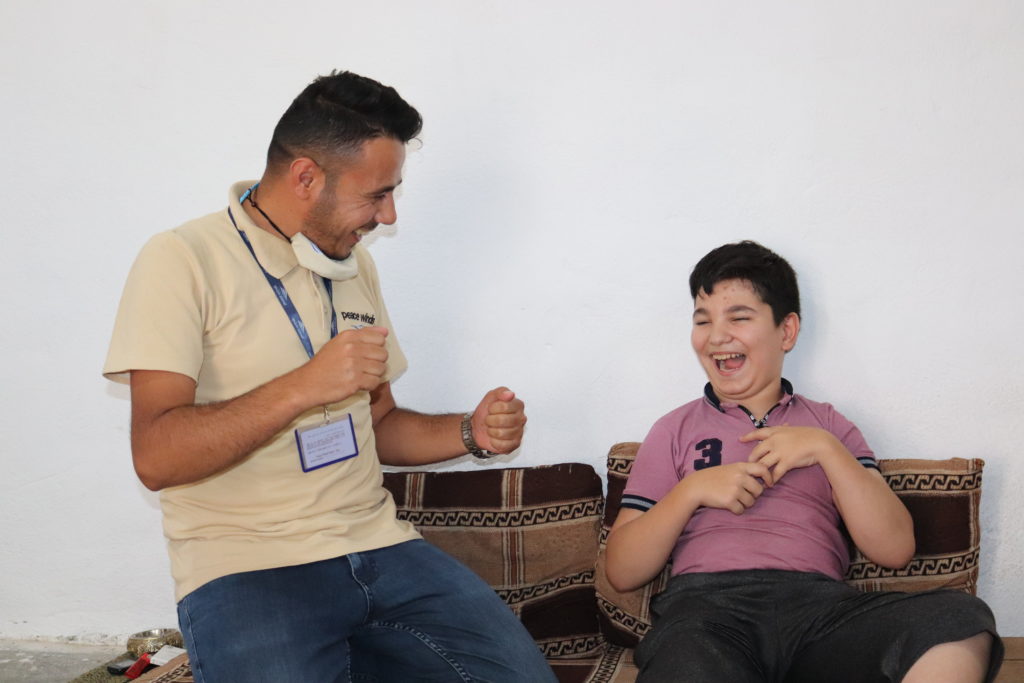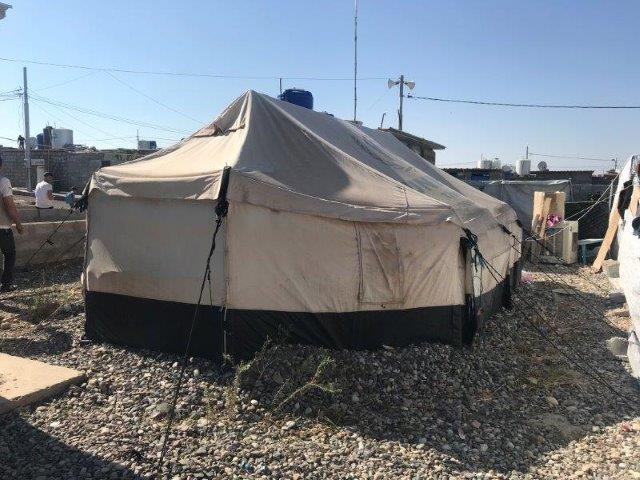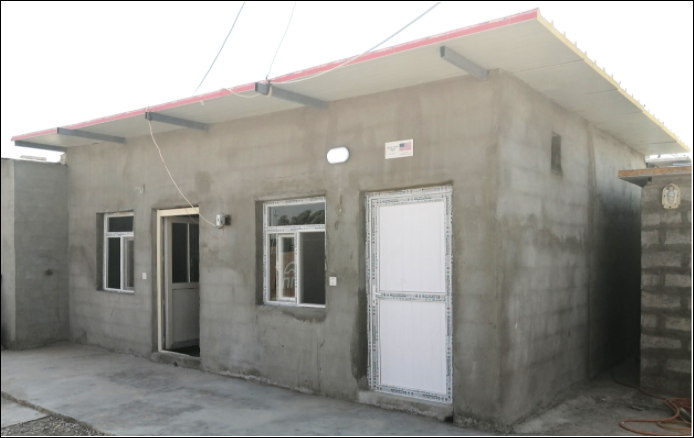Success Story from Iraq: a Safe Place to Call Home
Ali, now 13, was just four years old when he and his family fled from Syria to the Kurdistan Region of Iraq in 2012. “I remember some parts of our journey. It seems like a dream,” he told us. “I remember it was spring, and the land was green, but how is that possible? My father tells me I was too young to remember.”

Like many refugees Peace Winds supports, Ali and his five family members fled the horrors of the war affecting their home in the Qamishli governorate of Syria in hopes of finding a brighter future in the Kurdistan Region of Iraq (KRI).
The family made the first two-and-a-half hour leg of their journey to the town of Derk, Syria in a rental car, and from there, they walked about three hours to Suhela on the Iraqi border. However, because Ali has a physical disability making it difficult for him to walk, this was no simple feat. Not only did Ali’s father carry the boy on his shoulders the entire way, but he also carried the family’s youngest daughter, a baby at the time. After a long walk with many stops, a UN bus took Ali and his family the rest of the way to the Domiz-1 camp in Duhok, Syria.
Ali’s family first lived in a simple tent provided by camp management, but due to his disability, he faced great challenges in such a small shelter. “My father came up with ideas to help me even in small ways by giving me my own small space in the tent,” Ali said. “He wanted to help me move independently, but due to our poor condition and lack of work opportunities, he couldn’t make any improvements to our home.”

In December 2020, Peace Winds began the shelter upgrade program in Domiz-1 camp as part of the “Sustainable Shelters, Camp Infrastructure and Livelihood for Syrian refugees in the KRI,” a project funded by the U.S. Department of State’s Bureau of Population, Refugees, and Migration (PRM).
“As soon as we heard that there was an organization that would upgrade the shelters in our camp, I was overjoyed because I was sure that I would benefit the most from this project,” Ali told us with a smile on his face. “My whole family was happy, and the best part of this project is that my father got a job. He and my mother worked together daily until we finished improving our home, which is no longer just a tent, and we received money from Peace Winds.”
Peace Winds implements a Cash-for-Work (CfW) program that provides income opportunities, develops skills, and increases self-reliance for refugees who work as skilled and unskilled laborers as part of the shelter upgrade project. The Peace Winds CfW model has proven successful in past projects as it involves refugees in the process of upgrading their own homes and provides them training and work experience they can use to find future income-earning opportunities.
Ali told us that some of his happiest memories are of spending time with his parents and the Peace Winds team while upgrading their shelter. He built a friendship with the team of engineers and construction assistants who visited his family’s shelter during the upgrade process.
It has been a pleasure for Peace Winds to get to know Ali and his family, and we are honored to have played a small part in making their journey less difficult. Peace Winds remains committed to empowering Syrian refugees like Ali to build a better future, and we look forward to sharing more of their stories.
To read other success stories and to learn more about Peace Winds projects in Iraq and around the world, visit peacewindsamerica.org.
This article was funded in part by a grant from the United States Department of State. The opinions, findings, and conclusions stated herein are those of the authors and do not necessarily reflect those of the United States Department of State.
